COVID-19 PM2.5, A national study on long-term exposure to air pollution and COVID-19 mortality in the United States
Exposure to air pollution and COVID-19 mortality in the United States (Updated April 5, 2020) Press Release by Harvard University
Background: United States government scientists estimate that COVID-19 may kill between 100,000 and 240,000 Americans. The majority of the pre-existing conditions that increase the risk of death for COVID-19 are the same diseases that are affected by long-term exposure to air pollution. We investigate whether long-term average exposure to fine particulate matter (PM2.5) increases the risk of COVID-19 deaths in the United States.
Methods: Data was collected for approximately 3,000 counties in the United States (98% of the population) up to April 04, 2020. We fit zero-inflated negative binomial mixed models using county level COVID-19 deaths as the outcome and county level long-term average of PM2.5 as the exposure. We adjust by population size, hospital beds, number of individuals tested, weather, and socioeconomic and behavioral variables including, but not limited to obesity and smoking. We include a random intercept by state to account for potential correlation in counties within the same state.
Results: We found that an increase of only 1 μg/m3 in PM2.5 is associated with a 15% increase in the COVID-19 death rate, 95% confidence interval (CI) (5%, 25%). Results are statistically significant and robust to secondary and sensitivity analyses.
Conclusions: A small increase in long-term exposure to PM2.5 leads to a large increase in COVID-19 death rate, with the magnitude of increase 20 times that observed for PM2.5 and all-cause mortality. The study results underscore the importance of continuing to enforce existing air pollution regulations to protect human health both during and after the COVID-19 crisis. The data and code are publicly available.
Data and Code:
Our data and code is available on github here.
Manuscript and Supplemental Material
– MedRxiv: https://www.medrxiv.org/content/10.1101/2020.04.05.20054502v1
– Citation: Exposure to air pollution and COVID-19 mortality in the United States. Xiao Wu, Rachel C. Nethery, Benjamin M. Sabath, Danielle Braun, Francesca Dominici. medRxiv 2020.04.05.20054502; doi: https://doi.org/10.1101/2020.04.05.20054502
New Research Links Air Pollution to Higher Coronavirus Death Rates by Lisa Friedman, April 7, 2020, The New York Times
Coronavirus patients in areas that had high levels of air pollution before the pandemic are more likely to die from the infection than patients in cleaner parts of the country, according to a new nationwide study that offers the first clear link between long-term exposure to pollution and Covid-19 death rates.
In an analysis of 3,080 counties in the United States, researchers at the Harvard University T.H. Chan School of Public Health found that higher levels of the tiny, dangerous particles in air known as PM 2.5 were associated with higher death rates from the disease.
For weeks, public health officials have surmised a link between dirty air and death or serious illness from Covid-19, which is caused by the coronavirus. The Harvard analysis is the first nationwide study to show a statistical link, revealing a “large overlap” between Covid-19 deaths and other diseases associated with long-term exposure to fine particulate matter.
“The results of this paper suggest that long-term exposure to air pollution increases vulnerability to experiencing the most severe Covid-19 outcomes,” the authors wrote.
The paper found that if Manhattan had lowered its average particulate matter level by just a single unit, or one microgram per cubic meter, over the past 20 years, the borough would most likely have seen 248 fewer Covid-19 deaths by this point in the outbreak.
Over all, the research could have significant implications for how public health officials choose to allocate resources like ventilators and respirators as the coronavirus spreads. The paper has been fast-tracked for peer review and publication in the New England Journal of Medicine.
It found that just a slight increase in long-term pollution exposure could have serious coronavirus-related consequences, even accounting for other factors like smoking rates and population density.
For example, it found that a person living for decades in a county with high levels of fine particulate matter is 15 percent more likely to die from the coronavirus than someone in a region with one unit less of the fine particulate pollution.
The District of Columbia, for instance, is likely to have a higher death rate than the adjacent Montgomery County, Md. Cook County, Ill., which includes Chicago, should be worse than nearby Lake County, Ill. Fulton County, Ga., which includes Atlanta, is likely to suffer more deaths than the adjacent Douglas County.
“This study provides evidence that counties that have more polluted air will experience higher risks of death for Covid-19,” said Francesca Dominici, a professor of biostatistics at Harvard who led the study.
Counties with higher pollution levels, Dr. Dominici said, “will be the ones that will have higher numbers of hospitalizations, higher numbers of deaths and where many of the resources should be concentrated.”
The study is part of a small but growing body of research, mostly still out of Europe, that offers a view into how a lifetime of breathing dirtier air can make people more susceptible to the coronavirus, which has already killed more than 10,000 people in the United States and 74,000 worldwide.
In the short term, Dr. Dominici and other public health experts said the study’s finding meant that places like the Central Valley of California, or Cuyahoga County, Ohio, may need to prepare for more severe cases of Covid-19. ![]() And what about Alberta Cruelty Minister, Jason Kenney, decimating medical worker compensation during the pandemic, to continue stealing from the citizenry to give billions more dollars to oil patch billionaires and their bankrupting failing polluting industry?
And what about Alberta Cruelty Minister, Jason Kenney, decimating medical worker compensation during the pandemic, to continue stealing from the citizenry to give billions more dollars to oil patch billionaires and their bankrupting failing polluting industry?![]()
The analysis did not look at individual patient data and did not answer why some parts of the country have been hit harder than others. It also remains unclear whether particulate matter pollution plays any role in the spread of the coronavirus or whether long-term exposure directly leads to a greater risk of falling ill.
Dr. John R. Balmes, a spokesman for the American Lung Association and a professor of medicine at University of California, San Francisco, said the findings were particularly important for hospitals in poor neighborhoods and communities of color, which tend to be exposed to higher levels of air pollution than affluent, white communities.
“We need to make sure that hospitals taking care of folks who are more vulnerable and with even greater air pollution exposure have the resources they need,” Dr. Balmes said. ![]() Of course that’s not happening in Villian of Evil Jason Kenney’s oil patch polluted Alberta! What’s most demented is that Mr. Evil’s staunchest worshippers live in the most toxic parts of the province where medical doctors are fleeing the greed-induced hell that is Jason Kenney!
Of course that’s not happening in Villian of Evil Jason Kenney’s oil patch polluted Alberta! What’s most demented is that Mr. Evil’s staunchest worshippers live in the most toxic parts of the province where medical doctors are fleeing the greed-induced hell that is Jason Kenney!![]()
As more is learned about the recurrence of Covid-19, the study also could have far-reaching implications for clean-air regulations, which the Trump ![]() And, AER!
And, AER!![]() administration has worked to roll back over the past three years on the grounds that they have been onerous to industry.
administration has worked to roll back over the past three years on the grounds that they have been onerous to industry.
“The study results underscore the importance of continuing to enforce existing air pollution regulations to protect human health both during and after the Covid-19 crisis,” the study said.
Last week, the Trump administration announced a plan to weaken Obama-era regulations on automobile tailpipe emissions, asserting the rollback would save lives because Americans would buy newer, safer vehicles. But the administration’s own analysis also found that there would be even more premature deaths from increased air pollution.
In weakening a regulation last year on carbon pollution from coal-fired power plants, the Environmental Protection Agency similarly acknowledged that the measure was likely to result in about 1,400 additional premature deaths a year because of more pollution.
Asked whether the E.P.A. was also studying the link between air pollution and the virus or considering policies to address the link, Andrea Woods, a spokeswoman for the agency, referred the question to the Centers for Disease Control and Prevention, and asserted that the Trump administration rollbacks would lead to some air quality improvements. ![]() Pure evil, or pure idiocy?
Pure evil, or pure idiocy?![]()
Beth Gardiner, a journalist and the author of “Choked: Life and Breath in the Age of Air Pollution,” said she was particularly worried about what the coronavirus outbreak would mean for countries with far worse pollution, such as India.
“Most countries don’t take it seriously enough and aren’t doing enough given the scale of the harm that air pollution is doing to all of our health,” she said.
Most fine particulate matter comes from fuel combustion, like automobiles, refineries and power plants, as well as some indoor sources like tobacco smoke.
Breathing in such microscopic pollutants, experts said, inflames and damages the lining of the lungs over time, weakening the body’s ability to fend off respiratory infections.
Multiple studies have found that exposure to fine particulate matter puts people at heightened risk for lung cancer, heart attacks, strokes and even premature death.
In 2003, Dr. Zuo-Feng Zhang, the associate dean for research at the University of California, Los Angeles, Fielding School of Public Health, found that SARS patients in the most polluted parts of China were twice as likely to die from the disease as those in places with low air pollution.
In an interview, Dr. Zhang called the Harvard study “very much consistent” with his findings.
To conduct the Harvard study, researchers collected particulate matter data for the past 17 years from more than 3,000 counties and Covid-19 death counts for each county through April 4 from the Center for Systems Science and Engineering Coronavirus Resource Center at the Johns Hopkins University. The resulting model, which examines aggregated rather than individual data, suggested what Dr. Dominici called a statistically significant link between pollution and coronavirus deaths.
The researchers also conducted six secondary analyses to adjust for factors they felt might compromise the results. For example, because New York state has experienced the most severe coronavirus outbreak in the country and death rates there are five times higher than anywhere else, the researchers repeated the analysis excluding all of the counties in the state. They also ran the model excluding counties with fewer than 10 confirmed Covid-19 cases. And they adjusted for various other factors that are known to affect health outcomes, like smoking rates, population density and poverty levels. …
Air pollution linked to far higher Covid-19 death rates, study finds, Dirty air increases risk of respiratory problems that can be fatal for coronavirus patients by Damian Carrington, April 7, 2020, The Guardian
Air pollution is linked to significantly higher rates of death in people with Covid-19, according to analysis.
The work shows that even a tiny, single-unit increase in particle pollution levels in the years before the pandemic is associated with a 15% increase in the death rate. The research, done in the US, calculates that slightly cleaner air in Manhattan in the past could have saved hundreds of lives.
Given the large differences in toxic air levels across countries, the research suggests people in polluted areas are far more likely to die from the coronavirus than those living in cleaner areas. The scientists said dirty air was already known to increase the risk of acute respiratory distress syndrome, which is extremely deadly and a cause of Covid-19-related deaths, as well as other respiratory and heart problems.
A separate report from scientists in Italy notes that the high death rates seen in the north of the country correlate with the highest levels of air pollution.
The scientists said their findings could be used to ensure that areas with high levels of air pollution take extra precautions to slow the spread of the virus and deploy extra resources to deal with the outbreak. Air pollution has already fallen because of widespread lockdowns, but the scientists said ensuring cleaner air in the future would help reduce Covid-19 deaths. …
A small increase in exposure to particle pollution over 15-20 years was already known to increase the risk of death from all causes, but the new work shows this increase is 20 times higher for Covid-19 deaths.
“The results are statistically significant and robust,” they said. The study took account of a range of factors, including poverty levels, smoking, obesity, and the number of Covid-19 tests and hospital beds available. They also assessed the effect of removing from the analysis both New York City, which has had many cases, and counties with fewer than 10 confirmed Covid-19 cases.
“Previous work showed that air pollution exposure dramatically increased the risk of death from [the] Sars [coronavirus] during the 2003 outbreak,” said Rachel Nethery, one of the Harvard team. “So we think our results here are consistent with those findings.”
Xiao Wu, a fellow team member, said: “This information can help us prepare by encouraging populations [with high pollution exposure] to take extra precautions and allocate extra resources to reduce the risk of poor outcomes from Covid-19. It is likely that Covid-19 will be a part of our lives for quite a long time, despite our hope for a vaccine or treatment. In light of this, we should consider additional measures to protect ourselves from pollution exposure to reduce the Covid-19 death toll.”
The authors said the results highlighted the need to keep enforcing existing air pollution regulations, and that failure to do so could potentially increase the Covid-19 death toll. They noted that the US Environmental Protection Agency suspended its enforcement of environmental laws on 26 March.
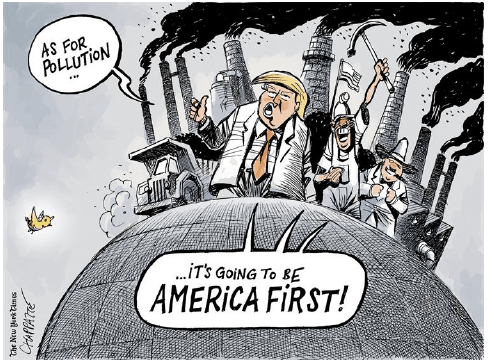
The study is being fast-tracked for publication in a major medical journal. …
The US has the third highest death toll to date, after Italy and Spain. A second study focusing on Italy, published in the journal Environmental Pollution, said: “We conclude that the high level of pollution in northern Italy should be considered an additional co-factor of the high level of lethality recorded in that area.”
It noted that northern Italy was one of Europe’s most polluted areas and that the death rate reported up to 21 March in the northern Lombardy and Emilia-Romagna regions was about 12%, compared with 4.5% in the rest of Italy.
“It is well known that pollution impairs the first line of defence of upper airways, namely cilia, thus a subject living in an area with high levels of pollutant is more prone to develop chronic respiratory conditions and [is more vulnerable] to any infective agent,” it said.
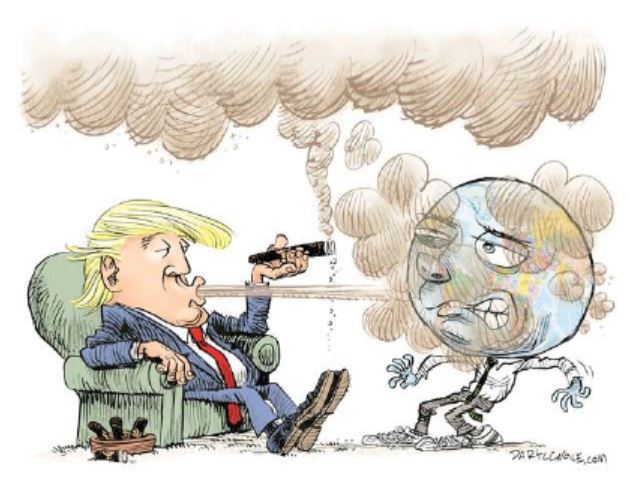
Medical scientists warned in mid-March that air pollution exposure could make Covid-19 worse. Early research on Covid-19 had suggested that the weakened lungs of smokers and former smokers made them more susceptible to the virus.
While lockdowns have caused air pollution to fall dramatically, a comprehensive global review published in 2019 found that over long periods air pollution may be damaging every organ and virtually every cell in the human body.

Refer also to:
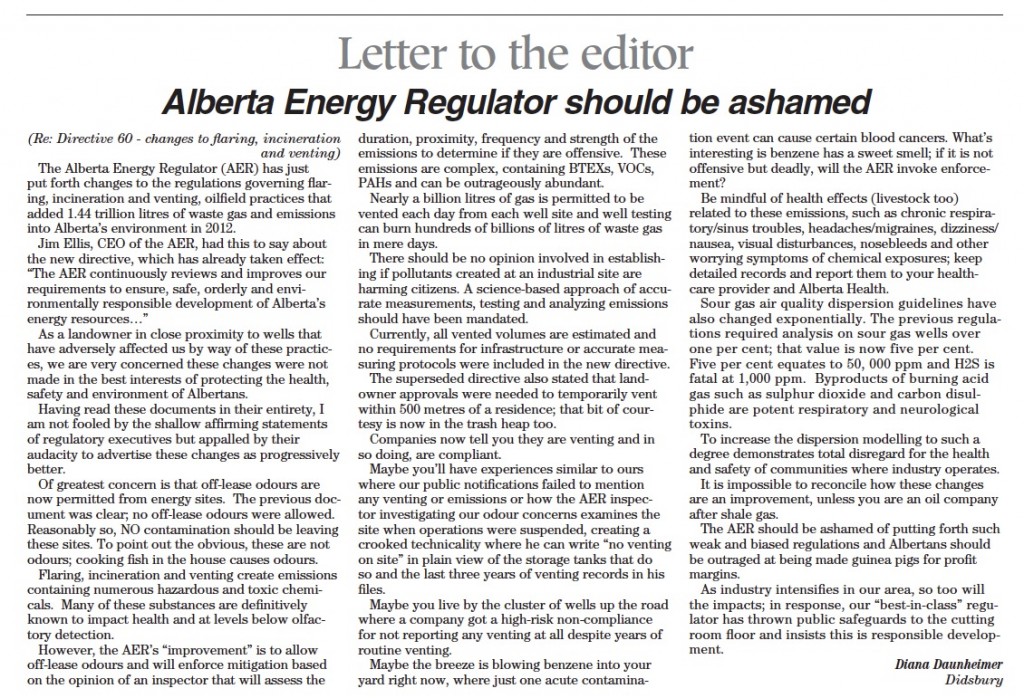
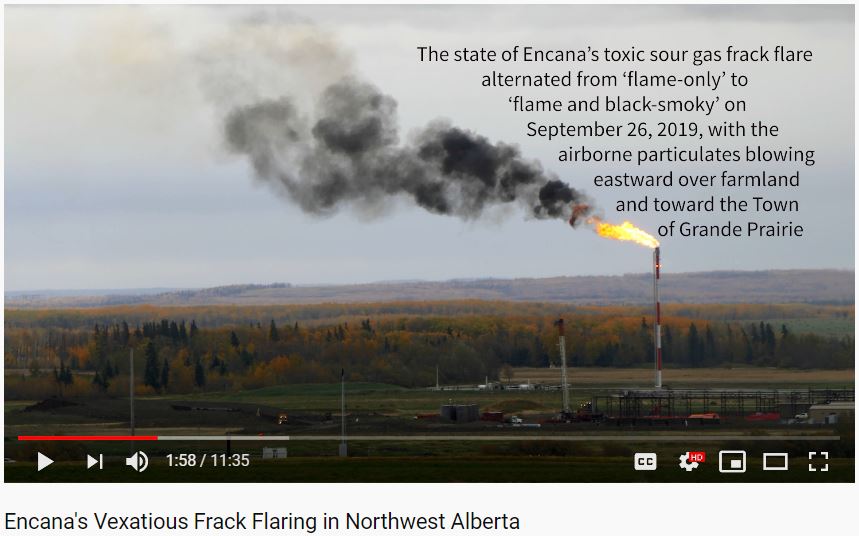
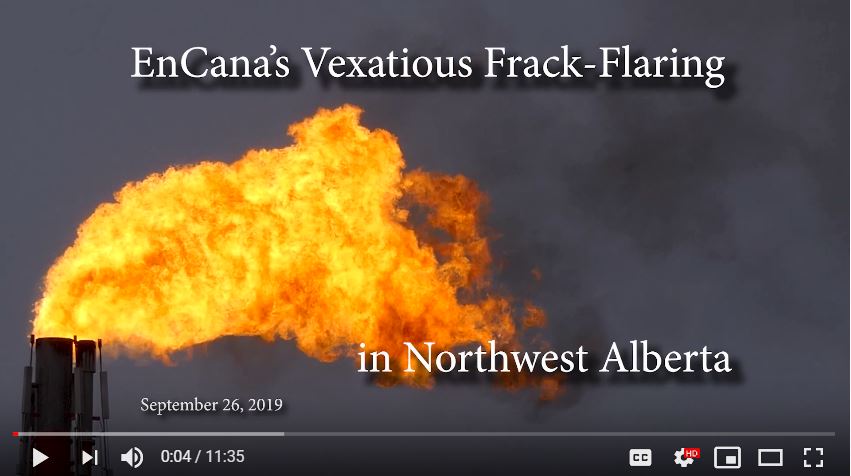
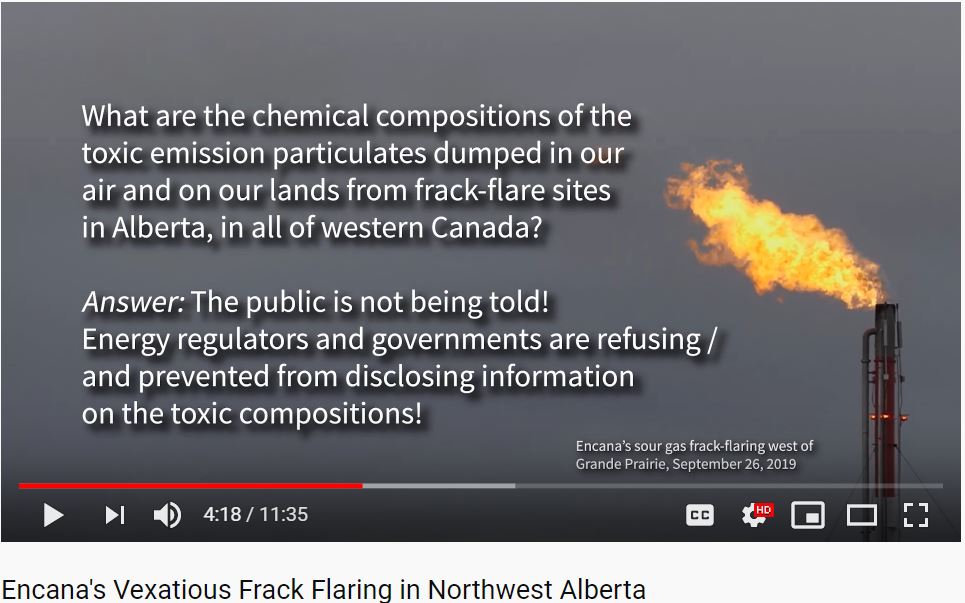
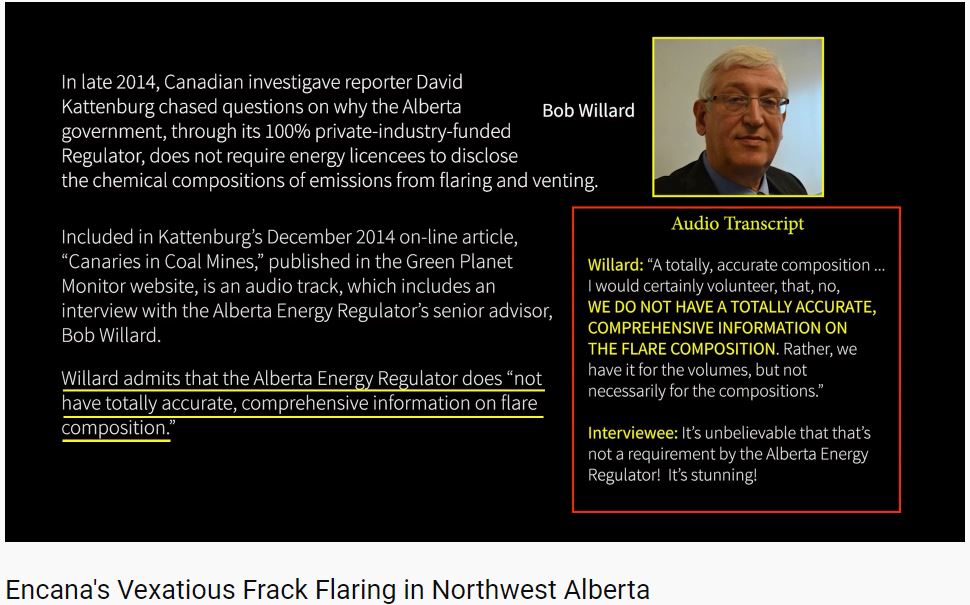
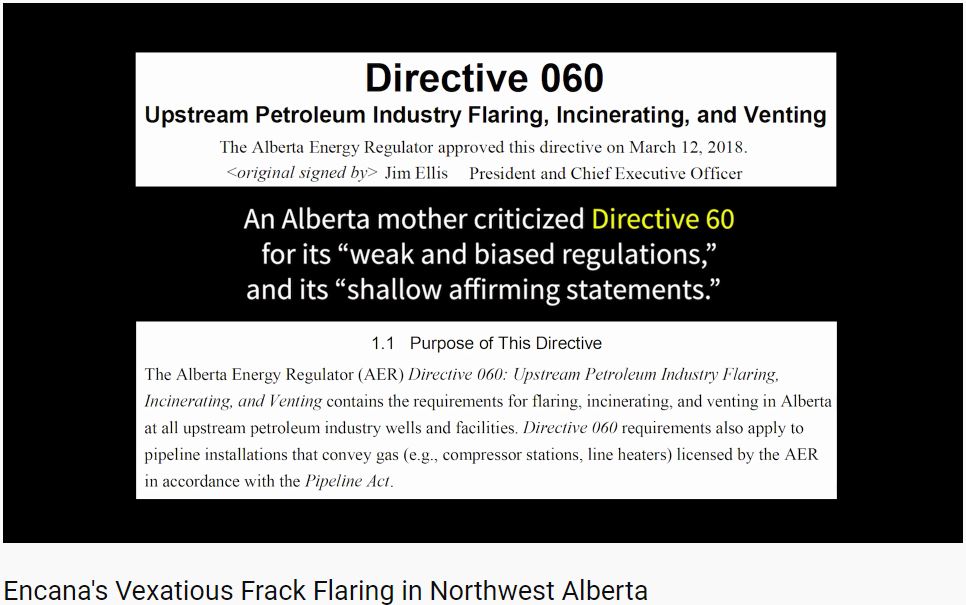
A few more examples of frac’ing air pollution in Alberta, laden with secret, deadly frac chemicals and diesel fumes:
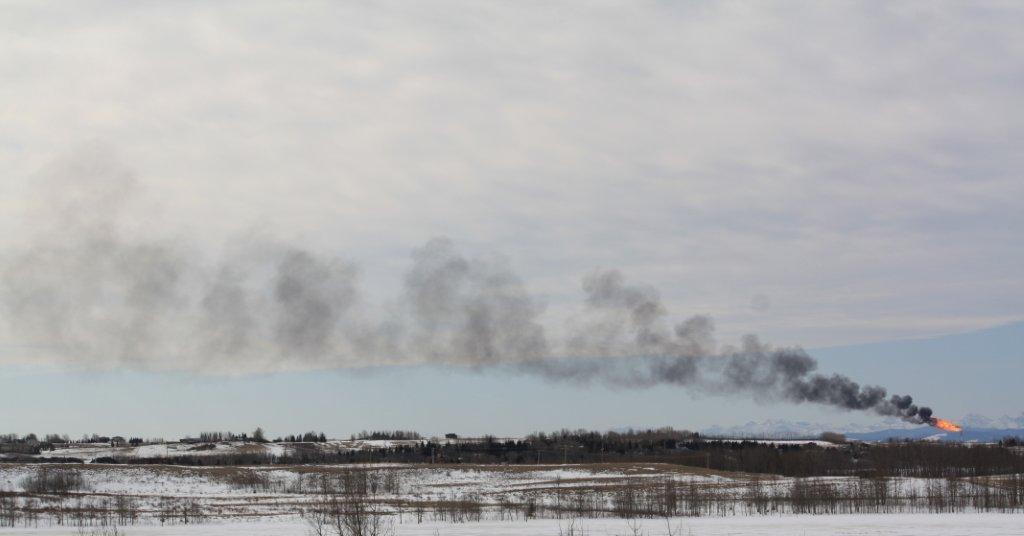
Spreading into Calgary
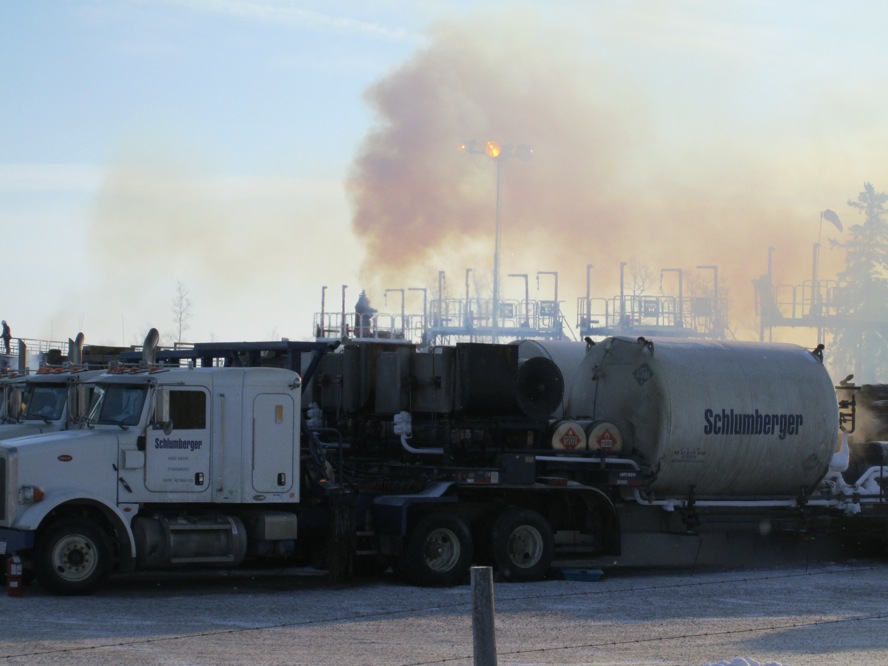
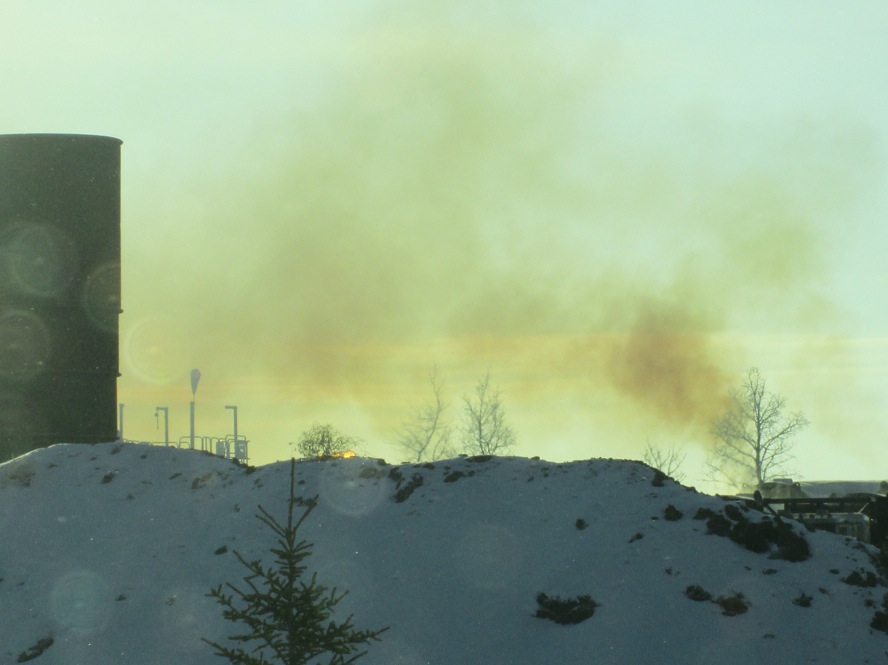
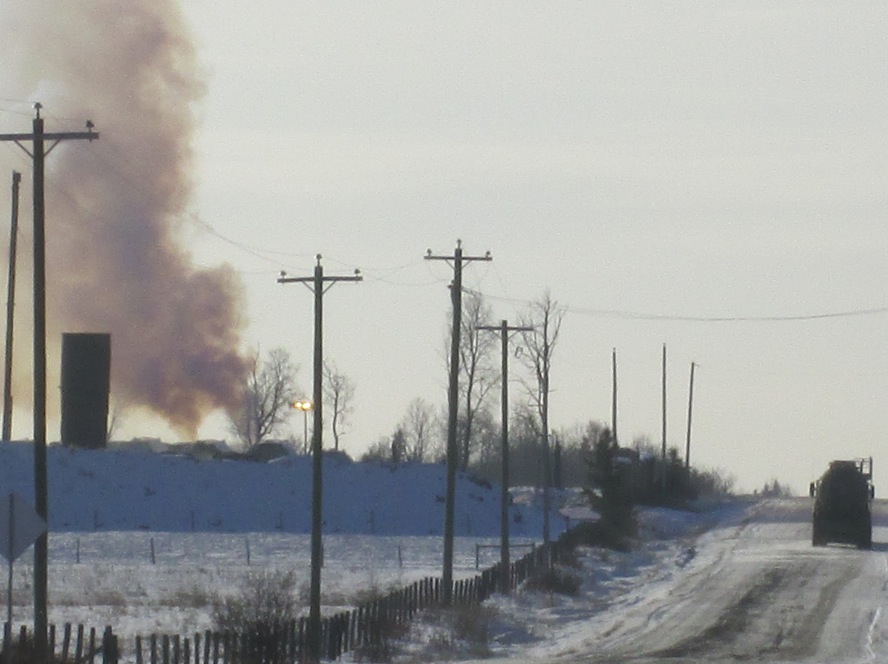
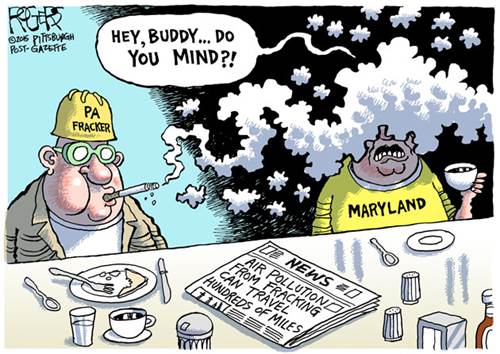
And, what about all those Encana/Ovintiv frac compressors spewing pollution 24/7 unmitigated?
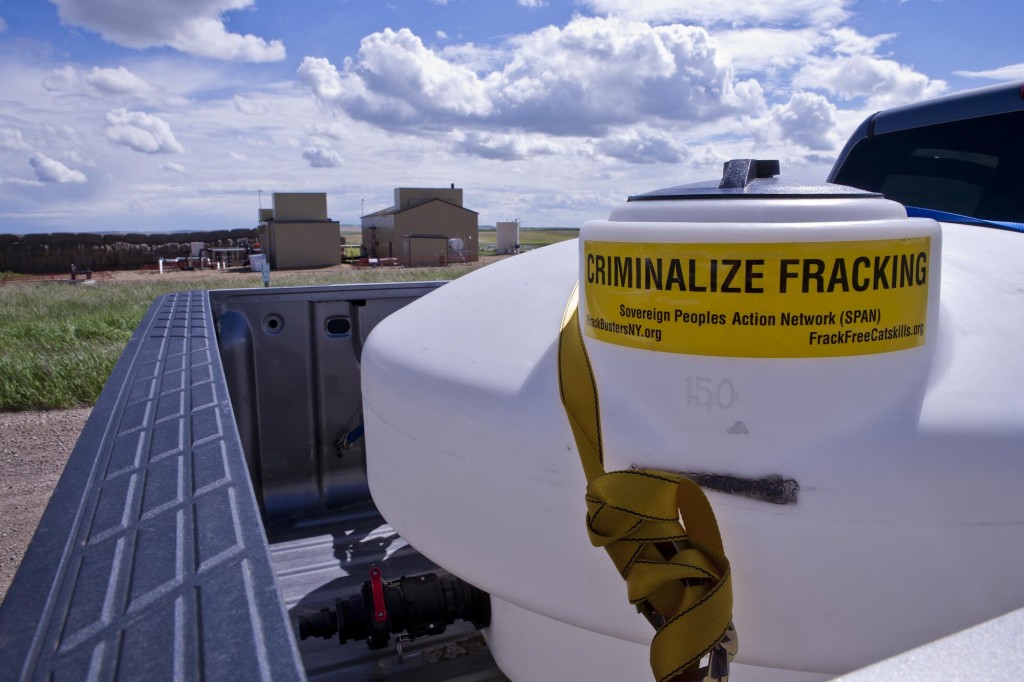
Compressors Encana/Ovintiv installed near Rosebud, Alberta, continue to violate Ernst’s legal right to quiet enjoyment of her home and land, and because the law-violating, pollution-enabling AER refuses to make the company cough up the secret frac chemicals injected underground on hundreds of wells in the community, no one knows what residents or animals are breathing, 24/7, for nearly 2 decades now.
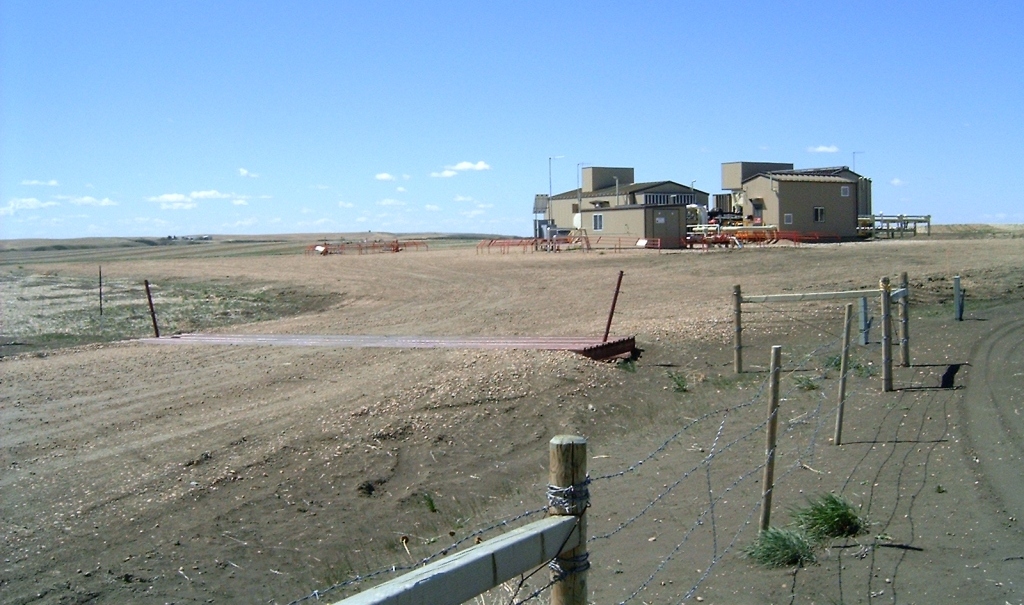
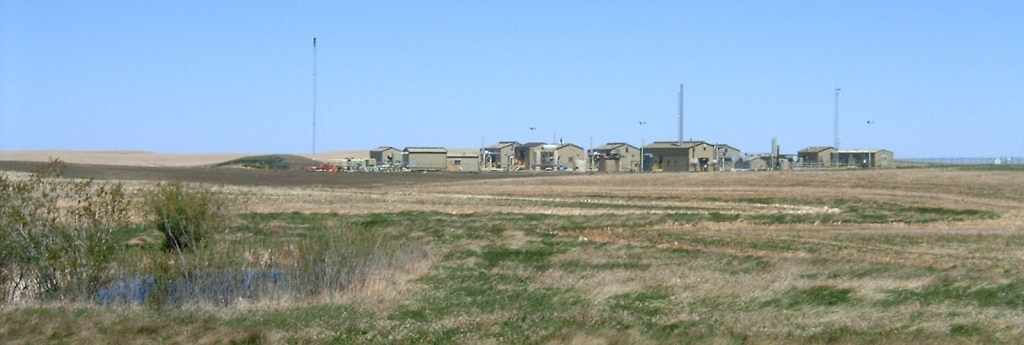
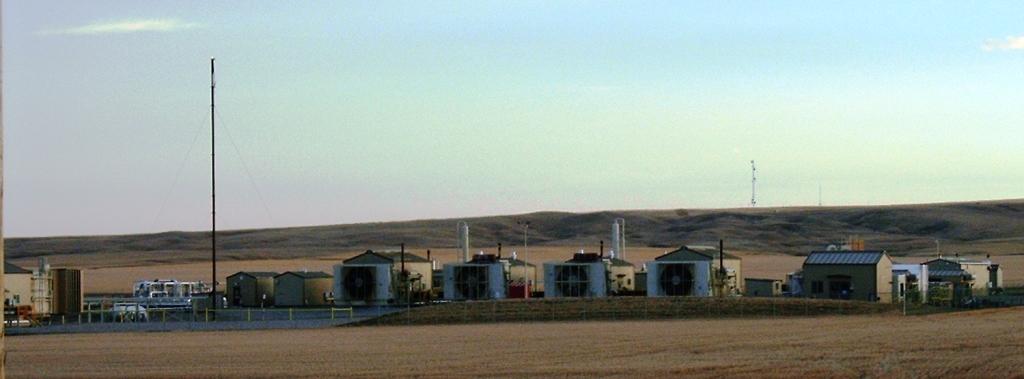
Compressors in photos above all installed by Encana/Ovintiv near Rosebud, Alberta.
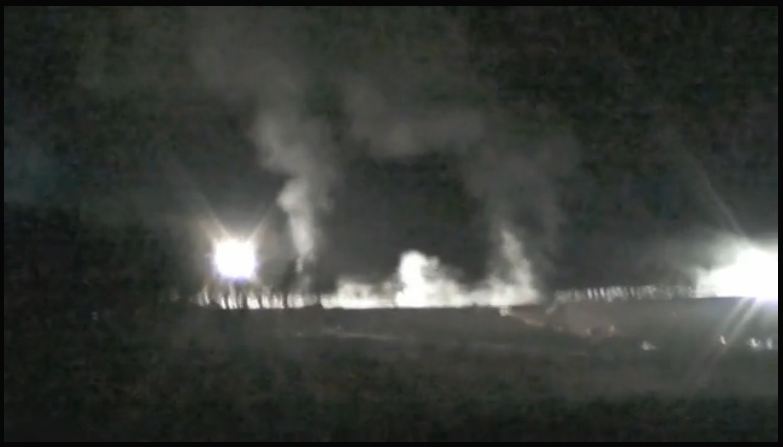

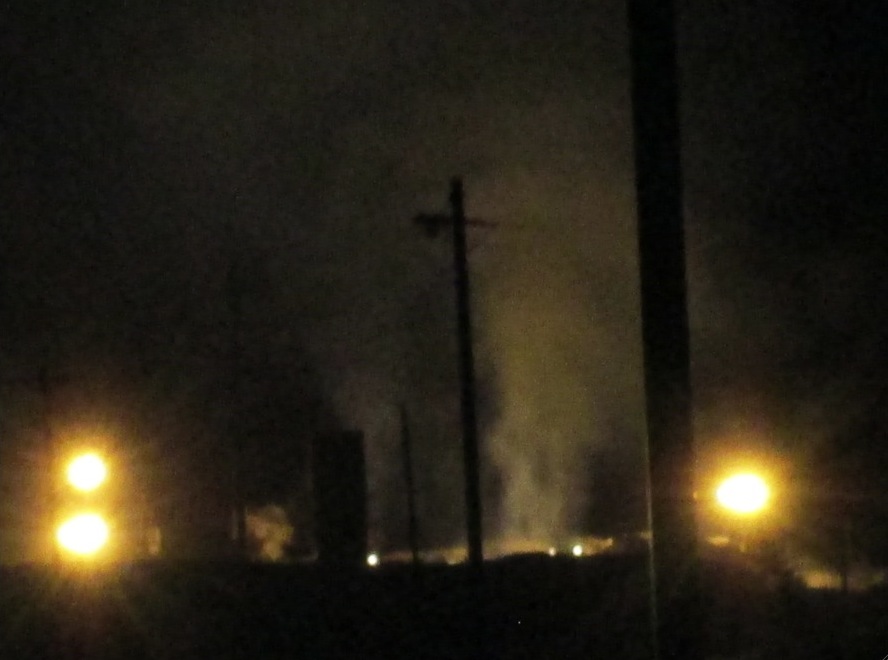
Night fracs in Alberta. Hold your breath all night and day long.
(Calgary Herald reported that frac’ers don’t frac at night – why? To con us into believing it’s safe to breath at night? The reporter, Stephen Ewart, previously worked for Encana.)
Toxic taint: Tests in Alberta industrial heartland reveal air-quality concerns

